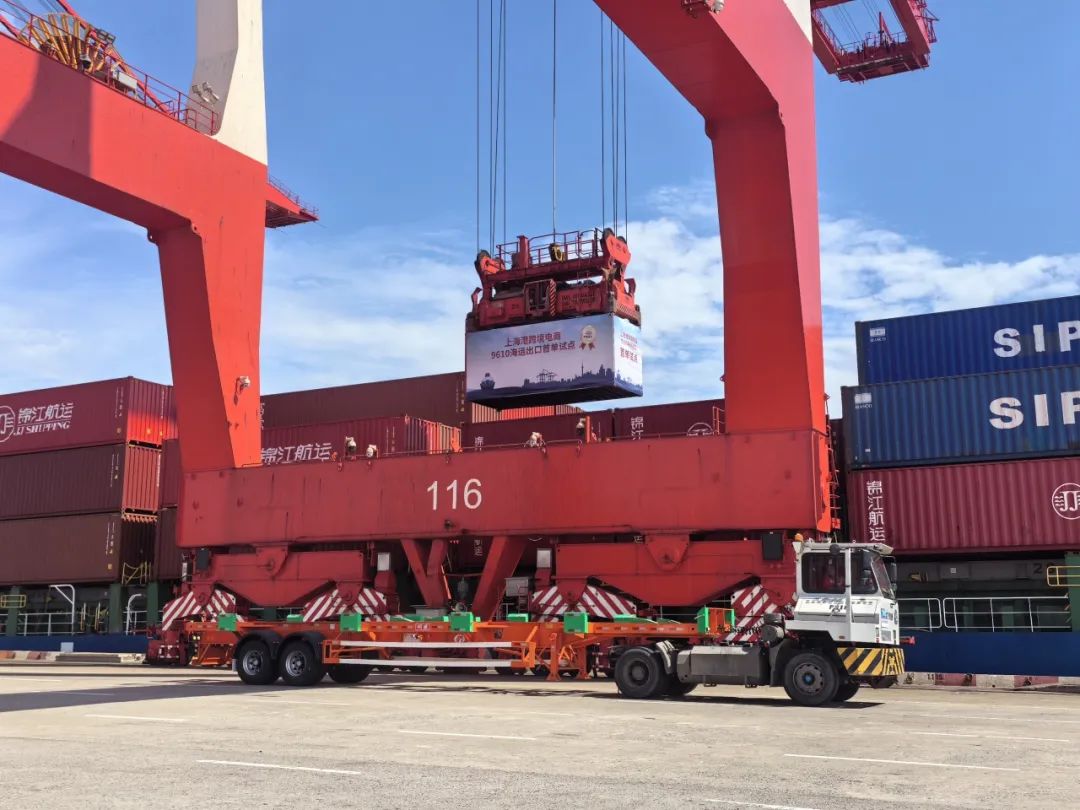New channel opened for cross-border e-commerce shipping exports in Shanghai
A shipment of containers loaded with 566 pieces of domestic furniture, daily necessities, travel sets, and other cross-border e-commerce goods departed from Shanghai's Waigaoqiao port area on July 19, bound for Northeast Asia, marking the opening of the "9610" sea export channel.

A shipment of containers loaded with e-commerce goods departs from Shanghai's Waigaoqiao port area on July 19. [Photo/WeChat ID: pdnews]
The "9610" code, standing for cross-border trade e-commerce, targets small-parcel, multi-item, high-frequency B2C (business to customer) orders. This model prioritizes orders before shipping via international express or dedicated logistics, streamlining customs clearance with "list verification". Compared to traditional exports, the "9610" channel offers shorter supply chains, lower costs, and improved efficiency, addressing small-volume, high-frequency challenges.
Leveraging Shanghai's robust air routes, cross-border e-commerce exports via air have soared, with 245 million declarations in the first half of 2024. This marks a 36 percent year-on-year increase, totaling 40.7 billion yuan ($5.67 billion) and 219,900 metric tons.
The new channel's strength lies in its ability to diversify logistics options for low-value, high-volume parcels. As an alternative to air, "Sea transport carries more, with fewer restrictions, reducing logistics costs significantly," said Ren Wenlei, general manager of the Waigaoqiao Free Trade Zone.
Shanghai Customs has made full preparations to ensure smooth operations of the channel, guiding enterprises through qualification, declaration, logistics, and system integration. "We use smart inspection equipment and have adopted high-tech means to enhance efficiency, validating the '9610' sea export model's feasibility," said Yin Wenchao, deputy director of Waigaoqiao Customs.


